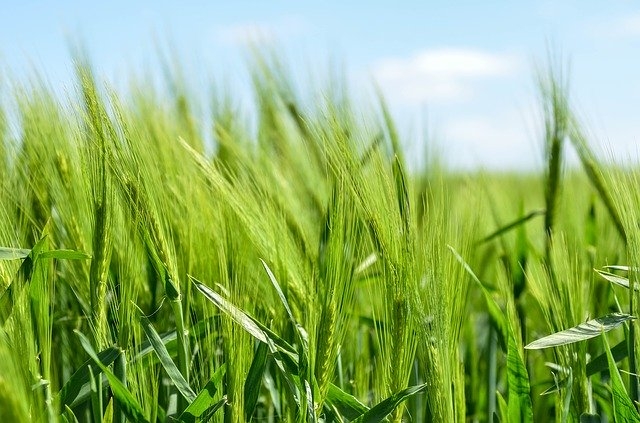
Agriculture has been one of the biggest innovations in the human history, with the first domestication of food crops occurring over 10,000 years ago. This domestication of food allowed for communities to base themselves in one area, growing tending and harvesting foods to sustain larger populations. Simple manual agriculture dominated for the first 8,000 years- focusing on the sowing and harvesting of grain crops, husbandry of animals and planting orchards of nut and fruit trees. The next 2,000 years brought massive technology changes that moved from mostly manual labour (both human and animal labour) to the manufacture of farming implements that allowed larger areas to be farmed with less labour. Coupled with the sharing of foods crops around the world, this again boosted the ability of humans to farm and feed larger populations with agriculture. What started as the simple understanding of plant biology (that is the planting of seeds to grow a replica) grew into the most important and largest industry in the world as well as the fuel for massive population growth. Food were grown with what was naturally available and if modern standard were applied to ancient agriculture, it would most definitely be ORGANIC. The 1900s brought massive change that not only modified how humans produced food but also much food humans could produce.
In the space of less than 150 years, humans discovered how to artificially create fertilizers as well as build machines that could do the work of many humans. There was revolutionary as it allowed for significant yield increases in labour. Interestingly one could easily correlated this change with the acceleration of human population, suddenly humans were able to produce more with less ,allowing massive growth in population ( from 1.5 Billion in 1900 to more than 7 Billion today). The 1940s brought what has been called “The Green Revolution”, which is the loose description given to the discovery of more artificial fertilisers and their distribution; creation of chemical herbicides and pesticides and genetic modification of plants and animals. This shifted food production into mass production that continues today. Driven by the artificial boosting of soil nutrients and application of poisons that reduced the impact of pests, genetic modification of plants has led to plants producing more yield than they would naturally produce and insertion of other animal and plant genomes to modify the properties of the plant. Again the boom of food production in this time could be linked with the increase in human population.
“The Green Revolution “brought more food to the World and with it brought huge volumes of artificial inputs to agriculture. In Australia alone, there is approximately 1.7 million tonnes of artificial fertilisers applied to farming (which has increased from 0.7 million tonnes in 1983).Pesticides use in Australia has also grown rapidly with over 5,000 tonnes of herbicides. 5,000 tonnes of insecticides and 3,000 tonnes of fungicides sprayed every year and growing rapidly. This awareness and the toxicity of many of these inputs has led to the (re)emergence of organic agriculture combines modern agriculture method with natural inputs and pests management. There has been a focus in the past twenty years plus on the food we eat and how it is grown. Many people are asking questions about the inputs that are applied to their foods and the impact that it could be having on the earth as well as their bodies. 1987 saw the emergence of Biological farmers of Australia, a group of farmers who advocated and championed the natural farming approach that work with nature rather than against. They championed and adopted farming technique that now form organic certification, a process that is incredibly stringent and bound by consumer Law.
Organic agriculture is a production system that regenerates the health of soils, ecosystem and people. Organic farmers rely on natural processes, biodiversity and cycles adopted to local conditions rather than the use of synthetic inputs like chemical fertilisers, pesticides and herbicides. GMOs are not allowed in organic. On the other hand conventional farming is that relies on chemical intervention to fight pests and weeds and provide plant nutrition i.e synthetic pesticides, herbicides and fertilisers. Organic farming relies on natural principles like biodiversity and composting instead to produce healthy, abundant food. Importantly, “Organic production “is not simply the avoidance of conventional inputs, nor is it the substitution of natural inputs for synthetic ones. Organic farmers apply techniques first used thousands of years ago, such as crop rotations and use of composed animal manures and green manures crops, in ways that are economically sustainable in today’s world. In organic production, overall system health is emphasized and the interaction of primary concern. Organic producers implement a wide range of strategies to develop and maintain biological diversity and replenish soil. Conventional and organic farming methods have different consequences on environment and people. Conventional agriculture causes increased greenhouse gas emission, soil erosion, water pollution and threatens human health. Organic farming has a smaller carbon footprint, conserves and builds soil health, replenishes natural ecosystem for cleaner water and air without toxic pesticideresidues;more profitable,yeilds equal or surpass& crops are more resilient thanconventional oneand create more jobs.So Organic farming is the sole alternative for our clean and sustainable future.


